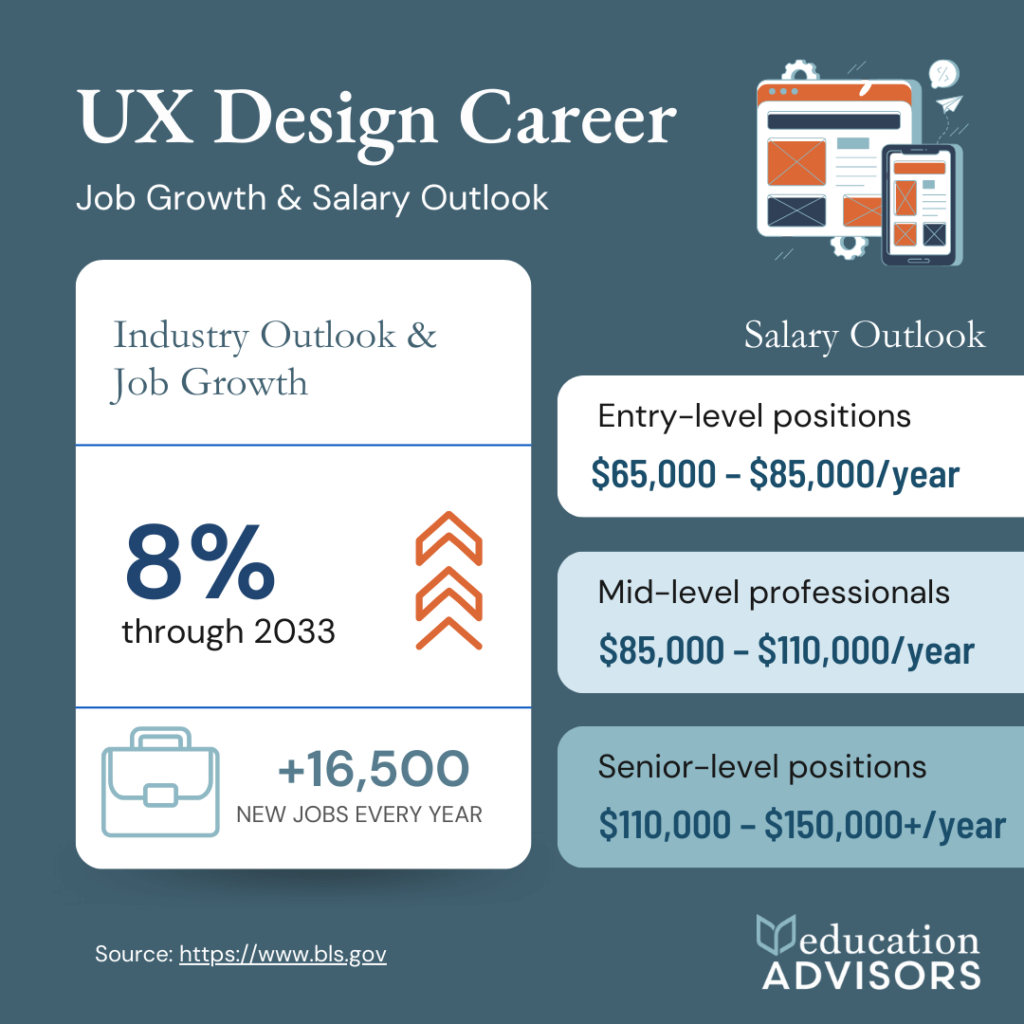career connections
Discover the steps to becoming a UX designer, career outlook, salary expectations, and essential skills needed to succeed in this in-demand field.
A User Experience (UX) Designer is responsible for creating digital products that are intuitive, user-friendly, and visually appealing. UX designers focus on how users interact with websites, applications, and software, ensuring an optimal experience.
The role involves user research, wireframing, prototyping, and usability testing to improve the design and functionality of digital products. UX designers work across industries such as technology, healthcare, finance, retail, and e-commerce, making it a versatile and high-demand career.
Launch your creative career in entertainment, tech, or design with a portfolio-driven education.
Explore More Articles
The Future of Education: AI Skills Every Graduate Needs
AI Boom: Industries on the Rise vs. Industries in Decline
AI for Educators: Degrees That Train You to Teach AI
Degrees That Will Thrive in the AI Business Era
The AI-Resistant Creative Skills You Should Build Now
Explore Degree Subjects
Many UX designers start with a degree in fields like:
However, a college degree isn’t always necessary. Many professionals transition into UX design by taking online bootcamps and certificate programs from platforms like:

To succeed in UX design, you need to develop key skills such as:
Employers want to see real-world projects in your portfolio. To create a strong UX portfolio:
Many entry-level UX designers start as:
Joining UX communities like UX Mastery Community or Dribbble can help you network and find mentorship opportunities.
When you’re ready to apply for jobs, consider:
According to the U.S. Bureau of Labor Statistics (BLS) and Glassdoor, the average salary for a UX designer in the United States is:
Salaries can vary based on location, experience, and industry. For example, UX designers in Silicon Valley or New York tend to earn higher salaries.

UX design is one of the fastest-growing careers. The BLS reports that demand for digital designers (including UX designers) is expected to grow 8% from 2023 to 2033, faster than the national average for all jobs (BLS, 2023).
Industries with high UX demand include:
A UX career might be a good fit if you:
No, many UX designers enter the field through bootcamps and online courses rather than traditional degrees. However, degrees in graphic design, computer science, or psychology can be helpful.
It typically takes 6 months to 2 years, depending on your background and learning path. A degree takes 4 years, while bootcamps take 3-6 months.
Popular UX design tools include:
Yes! UX design offers high salaries, job security, and remote work options. Plus, it’s a great field for creative problem-solvers.
Yes! Platforms like Google UX Design Certificate, Coursera, and free YouTube tutorials offer free UX design courses.